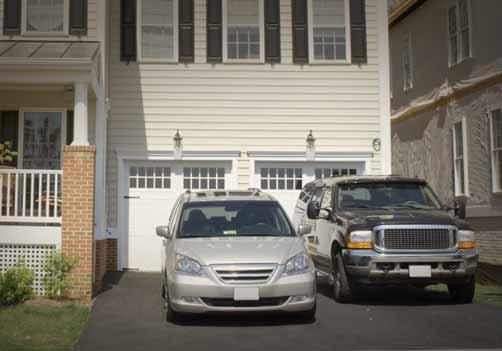

CHRISTIAN LEADER


Why not just live together? 17
Open doors and scandalous hospitality 21 National Convention preview






...We liked the idea of being deliberate about creating a family identity, of thinking about our family witness as a unit—not just as individuals.

Connie Faber Editor
Iwas embarrassed and angry. Our family outing on this beautiful day was ruined for me thanks to the behavior of our three children. We were visiting a new zoo in the area. Our two daughters were in grade school, and our son was a preschooler. We were about halfway through the exhibits, and the children’s constant bickering was getting worse. I wanted them to stop, but I also wanted to do something that had the potential of preventing future squabbling. I do not like being around quarreling children and yelling parents, and I didn’t want that to characterize our family.
Thinking through the options, I recalled an article published in the Christian Leader. The author challenged parents to intentionally establish goals for their family and a plan for achieving those goals. My husband and I weren’t all that interested in pursuing the author’s recommended process for developing family goals. But we liked the idea of being deliberate about creating a family identity, of thinking about our family witness as a unit—not just as individuals.
This seemed like a good opportunity to start creating that identity. So I took a deep breath and using my best firm but calm voice I told the kids that Fabers do not behave like this in public. That when we squabbled, it didn’t say good things about us as a family, and it wasn’t a good testimony of us as followers of Jesus.
It felt weird to talk about “being Fabers.” I wasn’t sure how the kids would respond. Much to my surprise, the bickering stopped and our visit to the zoo ended much more pleasantly than it had begun. I can’t say that our children never again argued in public—we’re a pretty normal family—but I don’t recall that it was ever quite that bad again. And my husband and I became more comfortable talking about the attitudes and behaviors we expected of our family.
Several of the articles in this issue address identity and priorities in families and churches. The article on youth sports encourages families involved with these activities to intentionally look for ways to reinforce their family values within the youth sports culture. Birch Bay (Wash.) Bible Community Church is a USMB congregation that is well known for opening its doors for community gatherings.
As followers of Jesus Christ, we give witness to our faith as individuals, as families and as congregations. My observation is that we’re well aware of what kind of testimony we offer as individuals and we are cognizant of our identity as congregations. But how deliberate are we as families? If you’ve never talked as a family about your identity as a family unit and how your household can bear witness to your faith, I encourage you to do so.













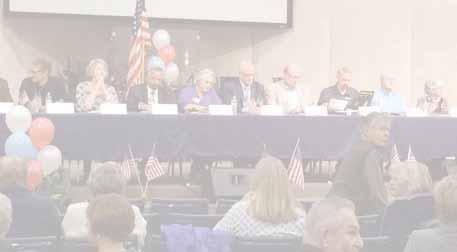


byTheBook
IDan Strutz

n recent months my wife and I have embarked on major remodeling of a house we purchased. We have learned a bit about building, remodeling and the fact that a work in progress is not always pleasant to look at. Sometimes we take backward steps to make forward progress. If we did not know there was a final plan ahead, as it sits right now—walls down to the studs, no kitchen or bathroom, etc.—we might shed a tear, wishing we had the house back the way it was!
In God’s Word, we find a small, seemingly insignificant book where the people mourn the temple they once had as they see the work in progress—the temple set up by Zerubbabel and the early wave of exile returnees. The book of Haggai speaks of this governor of Judah and how God commissioned Zerubbabel to work on the house of the Lord, the temple. It was a temple that in the physical realm ended up being significantly less attractive than Solomon’s temple, had fewer resources and never housed the Ark of the Covenant. Nor did it see the Shekinah glory of God. But, God had “stirred up the spirit of Zerubbabel,” and they got to work. The process brought joy and weeping from those who had seen the earlier temple (Ezra 3:12). In spite of several delays, the temple rebuilding project was completed (Ezra 6:15).
Sometimes, it may be the case that we look and weep at the fact that where we are today does not look like where we were yesterday. This can be true of churches where glory days seem to be in the past or in our own denomination or community. It can even be true of our personal walk with the Lord. But in looking back, are we remembering the much bigger promises that God in his glory has ahead? Are we trusting in what he has in store?
Zerubbabel is probably not a household or Sunday school name. The fact that he is mentioned in Haggai, the second shortest book in the Old Testament, probably does not help him much. But, the Lord stirred him to begin rebuilding. Surrounded by faithful men, he trusted the Lord for greater glory days still to come—and he built. Little did Zerubbabel know that the blessing that is said to be his—bearing the signet ring of the King—would translate to his being the only name between David and Jesus that is listed in both Matthew and Luke’s genealogies in the Gospels. A stirredup man, he trusted the Lord and “began to work on the house of the LORD Almighty” (Hag. 1:14).
When the spiritual building projects God has us in look worse today than they did yesterday, will you trust our God, like Zerubbabel did? Will you listen to God’s stirring and begin building?
Dan Strutz is pastor of Community Bible Church, the USMB congregation in Mountain Lake, Minn.

CHRISTIAN LEADER
July / August 2016
Volume 79 • Number 4
Connie Faber EDITOR
Myra Holmes ASSISTANT EDITOR
Shelley Plett GRAPHIC DESIGNER
Thinkstock® by Getty Images
COVER PHOTO (See story page 14)
The Christian Leader (ISSN 0009-5149) is a gathering place for the people, passions and mission of U.S Mennonite Brethren. The Christian Leader is published bimonthly by the U.S. Conference of Mennonite Brethren Churches. However, the opinions expressed here are not necessarily those of the church as a whole.
COPYRIGHT The articles printed in the Christian Leader are owned by the CL or by the author and may not be reprinted without permission. Unless noted, Scripture quotations are from the New International Version.
READER PARTICIPATION Letters to the editor should be 300 words or less and on one subject. Letters must be signed and include the writer’s city and state. Letters will be edited for clarity, appropriateness and length. Letters will be published, as space allows, unless marked, “Not for publication.” Readers interested in contributing essays for In My Humble Opinion and First Person should contact the editor. Freelance article submissions are welcome; a SASE must accompany articles.
SUBSCRIPTIONS $10 for six issues and $20 for 12 issues ($15, $30 in Canada; all other countries $25 for six issues); $1.50 per copy
CORRESPONDENCE: All correspondence, including subscription questions and address updates, should be addressed to Christian Leader Box 155, 107 N. Main, Hillsboro, KS 67063-0155 Phone: 620.947.5543
E-mail: christianleader@usmb.org
MEMBERSHIP The Christian Leader is a member of the Evangelical Press Association and Meetinghouse, an association of Mennonite and Brethren in Christ editors.
POSTMASTER Send address changes to Christian Leader, Box 155, Hillsboro, KS 67063. Periodicals postage paid at Hillsboro, Kansas.
“So the LORD stirred up the spirit of Zerubbabel son of Shealtiel, governor of Judah, and the spirit of Joshua son of Jehozadak, the high priest, and the spirit of the whole remnant of the people. They came and began to work on the house of the LORD Almighty, their God….” Haggai 1:14
The Christian Leader is published by

U.S. Conference of MB Churches

Richard Kriegbaum, President Fresno Pacific University
The church and its colleges
How does a small denomination support three schools?
The creation of two colleges and a seminary by U.S. Mennonite Brethren is part of a long and consistent pattern across American higher education: Church groups create institutions of higher education to help the denomination train its leaders and to inculcate their distinctive beliefs and behaviors. The denominations usually also hope their schools will strengthen their stature, identity and credibility in the larger culture. What is unusual is such a tiny denomination creating three institutions with over 4,000 combined total student enrollment. Why? How? Now what?
When I arrived at Fresno Pacific College in the summer of 1984, President Edmund Janzen had begun a process called “broadening the base.” With undergraduate enrollment stuck at about 400 students, the college had accumulated a significant operating deficit and was struggling to attract enough qualified students, faculty, staff, administrators and board members from a MB constituency that was too small to provide even half the people and gift income that was needed, while also supporting Tabor College, located in Hillsboro, Kan., and MB Biblical Seminary, also in Fresno. In order to survive, Fresno Pacific actively recruited students, staff and supporters who were not Mennonite Brethren.
In 1984 the Special Events Center, our gymnasium, had just been completed, but a major economic downturn had prevented fulfillment of many pledged gifts and created a large capital debt on top of operating deficits. The Pacific District Conference (PDC) rescued its college with a special giving campaign. Since then, Fresno Pacific has had a 30year development while maintaining its evangelical and Anabaptist core beliefs, values and relationships, including being controlled by the PDC. It now has 3,500 students from a score of different denominations studying on five campuses, plus 10,000 enrollments a year in professional development
courses and online programs. Fresno Pacific is about eight to 12 times bigger than it was in 1984, depending on what you measure.
During the same 30 years, Tabor College grew both in Hillsboro and at its regional campus in Wichita, Kan., with graduate and online programs. Tabor also welcomed more non-MB students, faculty and staff.
The third MB institution of higher education, its seminary, has now grown to 170 students and is launching its first hybrid online master’s degree in ministry which is capable of doubling that enrollment. It too is evangelical, Anabaptist and multidenominational, with a mostly MB faculty, a minority of MB students and guidance from an intentionally diverse Seminary Committee.
MB schools must compete with dozens of other Christian colleges and seminaries for MB students and MB supporters. During the past three decades, the net growth of USMB has been modest, achieved mostly by adding people without the capacity or the custom of significant financial generosity to education.
New conditions require adaptations. Faith-based organizations, including churches and denominations, that do not change fast enough or that make the wrong changes usually fail in their finances or in their faith and sometimes both.
Presently, USMB schools have outgrown their conferences and their denomination. Thirty years ago the schools were viewed by many as a restraint on the health of the denomination. Now the denomination often feels like a restraint on the health of its schools. The percentage of operating and capital budgets that comes directly from church or denominational sources has become relatively small, though contributions from MB households are still very
See COLLEGE, Page 30
Faith-based organizations, including churches and denominations, that do not change fast enough or that make the wrong changes usually fail in their finances or in their faith and sometimes both.
A love story orchestrated by God
God speaks, miracles happen if we listen
My high school sweetheart and I were married in 1971 and divorced 18 months later. My jealousy, anger and mistrust smothered the one I loved, and I was devastated. In an effort to run away from our failures, Jane fled, moving to Colorado and then Alaska.
Although divorced, Jane and I continued to care about one another. I received notes from her about things that were happening in her life. In her 1974 card, Jane wrote that she had given her heart to Jesus, was experiencing his love and forgiveness in her life and was attending church regularly.
Meanwhile, I was in a relationship and was trying to set my life back on track. While at my girlfriend’s parents’ home, I picked up a copy of the Living Bible and couldn’t put it down. As I read, the Lord began to reveal himself to me. I soon found myself at a crossroads, knowing that I could not continue to live with my girlfriend and grow in my relationship with Jesus.
Jane was visiting her family in Kansas and contacted me. We met to catch up and to share what God was doing in our lives. I shared with her my desire to lead my girlfriend to the Lord and then to marry her. Jane listened, offered encouragement and returned to Alaska a few days later. But she didn’t leave my heart or my mind.
In the next weeks I began to sense that the Lord wanted to restore my marriage with Jane, but I could not see how that would happen. Who in their right mind would ever walk back into a marriage that had failed? Who would again expose their heart to the nightmarish pain of going through the possibility of another divorce? We were so very different and so very wounded. I was very young in the Lord but was quickly learning that no one who wrestles with the Lord walks away without a limp. But I tried.
In my turmoil I wanted to find someone who would side with me and agree that I was free to marry my girlfriend once she gave her life to the Lord. So on a warm spring day I climbed on my Harley Davidson and rode to meet with one of my closest friends.
While neither my friend nor his wife knew the Lord or his Word at this time, they knew me well and cared for my happiness. Surely I would find the answer I was looking for.
That afternoon I laid out my case as best I could. But after hearing my story and my plans my friend said to me, “You have only one problem here. The divorce was the sin—not your marriage.”
I crawled on my motorcycle and rode the whole way back home with tears in my eyes. What if Jane thought this whole thing was crazy? What if she wanted no part of it? What was God doing in my life?
Some 5,000 miles away Jane was waiting on the Lord for direction in her own life. She was standing in a worship service in her church in Alaska, and God spoke to her: “Go back to Kansas!”
Jane and I began to communicate and eventually told each other about our experiences and what we believed God was directing us to do. Yes, all the “what ifs” were awkward.
On June 25, 1975, I picked Jane up from the Wichita, Kan., airport and drove her to her parents’ farm where she told them what we were about to do. They were shocked. That next Saturday Jane and I were remarried in a simple ceremony with Christian friends surrounding us. What God had put together let no man put asunder.
To this day we still celebrate our anniversary on February 14, our original wedding day. We believe that God had a plan for us and it took tearing us apart and breaking our hearts to prepare us for the things to come. This February we will celebrate our 45th wedding anniversary, give or take a few years. We have raised three wonderful children and served in a pastoral role for 25 years. As for God’s plan, it is still unfolding. He is not through with us yet.
Larry King and his wife, Jane, attend Hillsboro (Kan.) MB Church after serving for several years as the pastoral couple of Good News Fellowship, the USMB congregation in Marion, Kan.
FPU graduates urged to look to “Hall of Famers”
Spring 2016 graduates of Fresno Pacific University, the Mennonite Brethren-owned university headquartered in Fresno, Calif., were urged to look to “Hall of Famers” to find God’s direction as they plot their futures. Commencement ceremonies took place May 6. The estimated 544 new graduates included 220 from traditional undergraduate programs, 216 from bachelor’s degree completion programs, 90 from graduate programs and 18 from Fresno Pacific Biblical Seminary.
The call came from featured speaker Shirley V. Hoogstra, president of the Council for Christian Colleges and Universities, an international, nonprofit association of 180 Christian institutions. She pointed to great Americans such as Abraham Lincoln and Martin Luther King Jr., basketball standout Steph Curry of the Golden State Warriors and biblical heroes such as Moses, Abraham, Rahab and Peter as “Hall of Famers” who put their preparation into action. “Where will God ask you to go?” she wondered. “What will he ask you to do?”
Among the awards bestowed during commencement ceremonies was one that brought the crowd to its feet. A posthumous degree went to the family of Bryan Cheatham, a business administration student who died March 15, 2016 at age 28.–FPU

Tabor College celebrates 106th commencement ceremony
Approximately 2,000 parents and friends gathered at Joel H. Wiens Stadium and via live stream on the Tabor Webcast channel May 14 for Tabor College’s 106th commencement ceremony. Tabor is the Mennonite Brethren liberal arts college located in Hillsboro, Kan., with a second campus in Wichita, Kan.
Tabor’s graduate numbers were one of the largest at a total of 172. There were 105 candidates for graduation from the Hillsboro campus and another 67 candidates from the Wichita and online programs. The number of master’s candidates was the largest in Tabor College history.
Bryce Unruh, a 1991 Tabor College graduate, gave the commencement address. Unruh received a master’s degree in mathematics from Colorado State University and works in aerospace engineering. He urged the class to explore the possibilities in front of them and not accept known limitations, but to pursue what can only be imagined. “Here is what I want you to take away: I am an explorer and you are an explorer,” said Unruh. “I would like to challenge each of you graduates to consider yourself an explorer in this universe. It is through exploration that you truly discover your place in the universe.” –TC
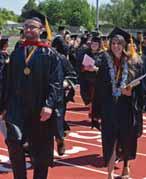
MBF announces retirement plan
U.S. Mennonite Brethren churches and staff now have an option for a specialized retirement plan through MB Foundation (MBF), the U.S. Mennonite Brethren stewardship ministry. MBF is partnering with GuideStone Financial Resources to provide the plan. With nearly 100 years of experience, GuideStone is the leader in church retirement plans and is uniquely qualified to provide MB churches with a competitive, personalized retirement plan. All employees receiving taxable income from a participating Mennonite Brethren church are eligible. –MBF
Matt Heard to challenge convention goers

Matt Heard, featured speaker for the USMB National Convention and Pastors’ Conference, will challenge attendees to “press on” toward abundant life in Christ both individually and as a national church family. Press On is the theme for the events, to be held July 27-30 in Denver, Colo. “We are given the privilege of pressing on toward experiencing the gospel fully,” Heard says in a video invitation posted on the USMB website. “What we’re going to do is spend some time celebrating and unpacking what it means to press on toward that life that only Christ can give us, not only as individuals but also as a community.” Heard, of Colorado Springs, Colo., was the senior pastor of Woodmen Valley Chapel in Colorado Springs for 12 years and now serves as president and CEO of The Gathering USA, a ministry headquartered in Orlando. –USMB

byTheNumbers
Looking for something to do in your free time while in Denver for the USMB National Convention?
Be one of the 2.1 million annual visitors to tour Celestial Seasonings. The company makes 105 varieties of tea and their tea drinkers consume 1.6 billion cups a year.


5 minutes with...

Chris Glanzer
Chris Glanzer is the go-to guyforaudio, video and lighting issues in his Ebenfeld MB (Hillsboro, Kan.)congregation as well as churches throughout the region. He also is a fixture at the controls for U.S. Mennonite Brethren conventions. But people might be surprised where else Glanzer’s skills take him. He took a break from preparinga“load-in”foraconcertinTulsa,Okla.,togiveus aglimpseintohisbusiness,GlanzerProAudio.


Who is the most famous person you have done produc on for?
Last fall we did a Donald Trump rally. You have to be ve ed by Secret Service to work these events, and we’re one of only a couple of produc on companies in Kansas preapproved by the General Services Administra on. This year it’s a lot of campaign events.
How did you get your GSA approval?
A few years ago President Obama was coming to Lawrence, Kan., for an event. We were prepped to do it, including the GSA approval, but it was cancelled because of the Boston Marathon bombing.
What other kinds of events do you do?
Predominantly concerts and theater. We’ve done produc on for performances of Cirque du Soleil. I recently did a mixed mar al arts event. It was an eyeopener. In the fall I usually do four or five musicals and in spring it’s more installs and helping churches with their tech needs.
I wanted to help churches be be er stewards by helping design systems that actually fulfill their mission. I’ve seen too many churches spend money on stuff that didn’t match up with their needs. Why did you get started in this business?

What advice do you give church tech teams?
The produc on role is an act of worship. Our society is trained that experiences, concerts and even mee ngs need to happen at a certain level of polish. The church has the most important message there is, and you must come prepared to give it your all.
Interview by Kathy Heinrichs Wiest
Youth workers to gather
The USMB National Youth Commission (NYC) is encouraging USMB youth workers to attend the Simply Youth Ministry Conference hosted by Group and held Oct. 7-9 in Chicago, Ill. NYC is arranging for USMB attendees to gather for a free meal during the event. “Youth workers need to know they aren’t going it alone,” says Russ Claassen of NYC. “Gathering at the Simply Youth Ministry Conference is a way to help promote individual and ministry team growth while providing an opportunity to network with other USMB youth workers for friendship, partnership and resources.”–NYC
FPBS offers online degree
Pastors who want to pursue a seminary education can now continue to serve where they are while earning their degree through a new online master’s program through Fresno Pacific Biblical Seminary (FPBS), the USMB denominational seminary located in Fresno, Calif. The Master of Arts in Ministry Leadership and Culture at FPBS uses online courses and short residencies to educate solo pastors, outreach pastors, family pastors, youth and child pastors—anyone serving at least 10 hours a week in a church ministry.–FPBS

Image resource grows
The Mennonite Archival Image Database (MAID) has added the Mennonite Library and Archives at Fresno Pacific University as its eighth partner and the first outside Canada, enhancing MAID’s vision of being a source for “the discovery of photographs of Mennonite life from around the world.” MAID’s eight partners have collectively uploaded over 82,000 photographic descriptions and nearly 19,000 images into its Internet-accessible database (archives.mhsc.ca). –MAID






Congolese release curriculum
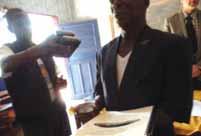
The Mennonite Brethren church in DR Congo has released a K–12 curriculum on Christian ethics from an Anabaptist perspective, launched with dedication events in Kinshasa and Kikwit in March. The national Mennonite churches manage more than 300 primary and secondary schools in cooperation with the DRC government and offer religious education as part of their sponsorship. A 2009 consultation on education developed goals for the schools, including curriculum, and the project was coordinated by International Community of Mennonite Brethren (ICOMB) and the nonprofit Mama Makeka House of Hope. ICOMB executive director David Wiebe was present at the celebrations, where a copy of the curriculum was “baptized” and prayed over in dedication.–ICOMB
Giving challenge fuels ministry
The four winners of MB Foundation’s (MBF) Giving Challenge have each received $5,000 to give away to the ministries of their choosing. The randomly-selected winners are: Ron Weidner, Huron, SD; Michelle Hamilton, Cimarron, Kan.; Garry Kargel, Eugene, Ore.; and Glenn Ratzlaff, Hillsboro, Kan. The contest ended at the end of April and documented over $1.1 million of generosity throughout 14 different states. MBF is the stewardship ministry of U.S. Mennonite Brethren. –MBF

By Jared Burkholder

Reflections on loss, heaven and our sovereign God
June 16, 2015
Dear Charlene,
Happy Golden Anniversary…well, almost. We’ll settle for 49 years, four months and six days of marriage before the Lord called you home. Fifty years ago today we said our vows, exchanged rings and promised before God and a church full of witnesses to be faithful to one another “in sickness and in health... as long as we both shall live.” Saying it, however, is a whole lot easier than living it.
Two years later we would learn that your mom had Huntington’s Disease, an inherited illness named after Dr. George Huntington who identified this neurological disorder in 1865. It was against the darkened backdrop of Huntington’s Disease that for nearly 50 years we daily endeavored to totally trust the absolute sovereignty of God for our marriage and family.
Late in the evening of Oct. 22, 2014, your heart stopped beating and your breathing ceased. I leaned over you and gave you a farewell kiss. In that moment your faith became reality, for to be absent from the body is to be at home with the Lord (2 Cor. 5:8).
Since you resided in the local nursing home for your last 3 1/2 years and I lived at home, I thought I was prepared for our separation at death. Within a couple of weeks, however, I began dealing with thoughts and feelings I had never entertained before—thoughts that rocked my boat. I was prepared, but not to the extent that I had thought I would be.
After several weeks of reflection, one day it dawned upon me that I was struggling with jealousy and insignificance. You now totally belonged to Jesus (as if there was ever a time you didn’t). We had talked about and anticipated this for decades. Yet when reality hit, it was different than I had expected. In my mind’s eye I saw you with Jesus and felt a pang of jealousy. It was like someone was
stealing my girlfriend, my partner, my lover. For nearly 50 years you were my soul-satisfying, intimate friend. As the Huntington’s progressed, I was your provider, your cheerleader and a major caregiver. Now, in heaven, Jesus is the center of your attention and affection. I envy that.
Increasingly I felt like I was sitting on an empty bench in an abandoned dugout. The baseball season was over and God was not renewing my contract. I was no longer needed as a designated hitter. You were in heaven and I was no longer an active player. I was a spectator—an observer, needing my own encouragers as I face the challenges of Parkinson’s Disease and other health issues.
• During this time, more out of curiosity than necessity, my mind overflowed with questions.
• Did angels escort you to heaven or did you instantly wake up there?
• When did you first see Jesus? What did he say to you?
• What do you do every day?
• Are you wearing a white robe or are colorful African prints available?
• Do you get to choose what age you want to be throughout eternity?
• Are there “street-streets” in heaven—like the kind we drive cars on—or are they more like paths and plazas?
• Is there a universal “Heavenese” that everyone speaks and understands?
• What are family relationships like in heaven? Will present spouses have a special relationship— intimacy apart from sexuality?
• Did Jesus go to prepare one dwelling place for the two of us or one for each of us?
One of the great Christian doctrines is that of resurrection—the certainty that there is life after death, a heavenly paradise for redeemed family members and friends (1 Thess. 4:13-18). In recent months, however, I have been pondering Jesus’ words regarding interpersonal relationships in heaven.

In Luke 20:34-36, Jesus says, “The sons of this age marry and are given in marriage, but those who are con- sidered worthy to attain to that age and the resurrection of the dead, neither marry or are given in marriage, for neither can they die anymore, for they are like angels, sons of God, being sons of the resurrection.” These verses continue to perplex me as I endeavor to under- stand what Jesus said and/or meant without having him say more. Interestingly, I do not remember ever having heard an exegetical message, Sunday school class lesson, college or seminary lecture or a group discussion on these verses. For me this is a work in process.

The older I get the more I’m convinced that life and death are all about God. God is the creator of all, and we are his stewards. At funerals of children and youth, I have reminded parents that our children are on loan to us from God. Now I remind myself that I should also think of you, my wife, in the same way, and that God gave me to you so that you could disciple me on his behalf.
By now, Char, you have undoubtedly met King David and have thanked him for the many psalms he took the time to write. How comforting to know our times are in God’s hand (Ps. 31:15). How faith-building to know that our God is the Lord over all disease and calamity. How encouraging to know that it is God who genetically and physiologically wove and embroidered you in your mother’s womb (Ps. 139:13-15).
And how incredible that God intentionally knit a few extra protein stitches on the “short arm” of Chromo- some 4 of your DNA, which in your late 40s began producing the rogue Huntington protein. This protein gathers in a variety of the some 20 centers of the brain, killing off neurons, resulting in an individually unique collage of abnormal, movement manifestations called Huntington’s Disease.
How fascinating that the same divine hands that wove Huntington’s Disease into your DNA are the same fingers that wrote in his book the number of your days—70 years, two months and 20 days—some 25,648 days total—before one of them came to be (Ps. 139:16).
No matter how theologically perplexing such a per- spective of God is to many, and no matter how tempted we are to describe the sovereignty of God in less than absolute terms (e.g., “divine providence”) the Word of God continually and consistently describes God as the first cause of everything; the one who makes himself personally responsible for everything, even Hunting- ton’s Disease.
For example, God declares to Moses in Exodus 4:11, “Who has made man’s mouth? Who makes a man not able to speak or hear? Who makes one blind or able to see (or having or not having Huntington’s Disease), is it
not I, the Lord?” (NLV). And again in Isaiah 45:7 God says, “ I form the light and create darkness, I bring prosperity and create disaster (i.e., natural disasters); I the LORD do all these things.”
God’s priority for humankind is forgiveness and free- dom from sin, not from suffering. God has an endless number of options up his inscrutable sleeve that might be totally unacceptable and unloving on the surface but in the end are the most loving thing he could do. In the end, God’s actions will have the greatest possibility to draw the greatest number of people to know him, to share him with others and to worship him.
Finally Char, in the words of Humphrey Bogart in the movie Casablanca, “Here’s looking at you, kid.” I’ve been looking at you for almost 50 years, and you con- tinue to amaze me!
• I’ve looked at you romantically, with your hourglass figure.
• I’ve looked at you smile when receiving gifts and holding and nursing our four newborns.
• I’ve looked at you early in the morning having your quiet time with God.
• I’ve watched you joyfully cook for family and others.
• I’ve seen you play the piano with such feeling and meaning.
• I’ve looked at your tears as you struggled with Huntington’s Disease.
• I’ve looked at you as you slept peacefully.
• I’ve seen you work with severely and profoundly handicapped public school children for 17 years.
• I proudly looked at you as you graciously walked through the valley of the shadow of death as a resident of our local nursing facility.
Our fuel for every day was hearing God say, “Trust me.” One day we will all celebrate in glory, with or without streets and with or without white robes. I antic- ipate seeing you soon. C.S. Lewis observed, “There are far better things ahead than any we leave behind.” Even so, come Lord Jesus.
Happy anniversary with all my love,

Jared Burkholder currently lives in Hesston, Kan. He was pastor of Parkview MB Church in Hillsboro, Kan., for nine years and for 20 years was a college professor and administrator at Grace University, Omaha, Neb. The Burkholder family wanted to help in the search for a cure for Huntington’s Disease and so Charlene donated her brain to Harvard Medical School, the only medical school in the U.S. presently doing research on Huntington’s Dis- ease. Jared says, “Char has the dubious distinction of being the only Burkholder who went to Harvard, all ex- penses paid.”






Why not just live
A Christian response to cohabitation
When my husband and I were married 32 years ago, the pathway to marriage went something like this:
We dated.
We got engaged with much fanfare from friends and families.
We were “showered” by friends and families with practical gifts (kitchen items, favorite recipes from family members, Tupperware, towels, etc.) to help us set up a household.
We “prepared” for marriage with the help of a pastor. We were married in church.
We consummated the marriage on the honeymoon. We created a household and home together. This courtship ritual was a familiar one, and virtually everyone we knew who entered into marriage did so by this pattern with only slight variations. It was a pattern observable both within our Christian communities and in the “secular” world around us. Very few people we knew broke with the rubric.
Today, many of us realize that the pattern into marriage is changing. Living together has in many ways become culturally normative, and it may or may not eventually lead to marriage. There is much less social stigma about cohabitation, making it a very real option for many couples.
Why live together first?
Cohabitation has become so common that it is odd not to live with a partner before marriage. Cohabitation has increased by nearly 900 percent in the last 50 years. Right now in the United States, statistics tell us that are there are more couples cohabitating than are married.
Why is it so common these days for couples to move in together? There are many reasons and here are just a few:
As a result of contraception and abortion, there are more people today engaging in sexual activity outside marriage. Simply put, the argument goes: If we’re sexually active anyway, why not just move in together? For these, the only “disadvantage” (if it would be called that) to moving in is that the couple’s sexual activity becomes more openly acknowledged.
There is an increasing gap between puberty and marrying age. Thirty or more years ago it was not uncommon to get married around the age of 21. However now people are marrying at a much older age. As one young adult told me, “‘True love waits’ was fine when I was a teenager, but can it wait all the way until I’m 30 or more?”
Increasingly I hear young adults talk about their fear of making commitments. This fear is not limited to their personal relationships but is extended also to making commitments of faith and to the church.
Both women and men favor living together as a way of gathering vital information about a partner’s character, fidelity and compatibility. Cohabitation is seen as a way of “testing” the relationship to see about long-term compatibility.
Young adults and others increasingly struggle to find good role models of married life. Many have witnessed or experienced divorce in their families and among their friends, making them skeptical or afraid of making their own marriage commitments.
For some couples, cohabitation can make good economic sense, preventing couples in love from making two rent payments.
The reasons that young couples move in together are not always based on reality. For example, the logic that cohabitation can function as a kind of “test drive” of a long-term relationship might suggest that couples who have lived together before marriage will have better marriages. But there is no evidence to support this belief, and there is some indication that the opposite may in fact be true.
Some evidence suggests that cohabiting before marriage increases the likelihood of divorce, particularly for those who have cohabited multiple times. If the logic is extended, it would make sense then that divorce rates should be decreasing with all the “pre-marriage” testing going on by cohabiting couples. But there is no evidence that this is the case.
A Christian response to cohabitation
How do we as Christians respond to the reality of cohabitation in our families and in our communities? Across almost all Christian denominations, official church teaching does not sanction cohabitation before marriage. It would be difficult to provide a biblical or theological argument to advocate for the practice. However despite any discomforts we may have as Christians, given the current cultural reality, we do need to find healthy ways of relating to the increasing numbers of couples who are living together. Let me suggest a few things:
We can begin by acknowledging the current pressure that people feel to live together. For many people living together simply makes sense, and for Christians that logic may feel somewhat scary. For many couples, living together capitalizes on a guarantee missing from most marriage vows—“If you don’t like it, you can bring it back.”
While such logic may be discouraging, given the current cultural realities, we need to recognize the pressure there is on our young adults and stand with them as they face the pressures.
We need to recognize that not all cohabitation is the same. As soon as one encounters real people who are co-

e together?
By Irma Fast Dueck

habiting, this becomes obvious. Cohabitation is not uniform—some couples are pre-nuptial and some are nonnuptial. It can be helpful to understand why a particular couple is choosing to live together.
For some, cohabitation might be a “casual” arrangement. A couple may drift into living together. Usually they already have a full sexual relationship, which they see as a normal part of “going out together.” One moves in with the other for convenience or financial reasons, without thinking much about the future.
For others, cohabitation is considered being “cautious.” In this case the couple is more serious about the future. They generally believe in marriage and are tentatively moving toward it but are not yet fully committed to each other. Often they think of cohabitation as a trial marriage, hoping that it will help them to decide whether they are “right for each other.”
Others are “committed” cohabitators. The couple has made the decision to stay together, and they hope that it will be for life. They expect to get married but have not done so yet for various reasons—the cost of a wedding, lack of urgency or one may be waiting for a divorce.
Still others see cohabitation as a kind of “alternative” to marriage which they might view as an outmoded practice for either cultural or philosophical reasons. They are sometimes very committed but are not conventional. They do not think that formal marriage would make any positive difference to their relationship.
If we better understand why a couple chooses to live together we may be better equipped to know how to relate and minister to them.
We need to talk about marriage. Where is it that people learn what Christian marriage is about? Where are our young people receiving their formation about dating relationships, sexuality and marriage? Frequently the only time we talk about marriage is at weddings. But if young people are not attending weddings, where will their ideas about marriage be shaped? Now more than ever, the church needs to be intentional in the way it talks about intimate relationships and marriage.
Celebrating marriage and singleness
This may also mean that we as Christians need to find ways of strengthening our marriage theology and practices so that marriage doesn’t simply become another version of cohabitation. One of the things that distinguishes marriage from cohabitation is that marriage from the start is a communal practice.
To marry, to celebrate a love and commitment publicly before God and in the presence of family and friends, is to acknowledge God’s presence and work in the life of the couple. To marry recognizes that one’s life is more than one’s own, that one’s actions affect more than oneself. Marriage is more than a private affair between a couple. Having said this, it is also equally important that we learn to speak well of singleness. We are prone sometimes to over “couplifying” the church. Unfortunately some churches treat their singles as peripheral to the core or to members who belong to families or are coupled up. Congregations assume that the “normal” single will sooner or later marry and start a family. One of the problems of a strong emphasis on the “traditional” family is that it denigrates and dishonors singleness, causing people to feel pressure to enter into intimate relationships that may not be healthy. If we take the witness of Jesus and the apostle Paul seriously, singleness is a valued path.
It is not unusual for couples once active in the church to distance themselves from the church if they move in together, and this is unfortunate. How can we remain in relationship with them? This is the key: We must care for them while not diminishing our Christian understanding of marriage.
We can encourage those that are cohabiting to move toward a fuller and more complete commitment while holding fast to our central Christian understanding of both marriage and singleness. Our faith communities can intentionally model and teach both a Christian understanding of marriage and singleness. This is the challenge that lies before us.
Irma Fast Dueck is associate professor of practical theology at Canadian Mennonite University in Winnipeg, Man. Dueck has researched cohabitation and presented on the topic to church leaders throughout Canada and the U.S. Dueck recently participated in a panel discussion at CMU about the church’s response to cohabitiation. Watch the discussion at http://www.commonword.ca/ResourceView/48/18335






SPORTS, KIDS
ByDavidKingandMargotStarbuck
Wof questions about the direction and demands of the youth sports movement today, and we know lots of parents are asking the same questions. We’re convinced that sports provide some of the richest experiences in which we can learn about ourselves, other people and God and what happens when those three intersect. Sports themselves are neither good nor bad. It is up to us to decide whether we’ll use sports or be used by them.
Though sports have great potential to help your child grow further into the image of God and into mature, compassionate adults, inherent in today’s youth sports culture is also the likelihood that—unexamined—your child’s experience of sports might ingrain values to which you do not ascribe.
Loss of community bonds. While strong relationships can be built on travel and elite teams, the setting doesn’t afford the same kinds of opportunities to develop and deepen friendships as sharing life “on the ground” might. Members of school teams share the whole day together. They experience the same lunch menu, school assemblies and daily practices. Members of travel teams typically get together for one or two practices and then spend the weekend at a tournament. The focus of travel team ball in the older childhood years shifts to the exposure of players to college coaches. Too often the special bonds of friendship that have developed in neighborhoods and churches, through years of going to school and playing together are dropped for the individualism of the team culture. Detachment from faith community. Competitive youth sports are pulling families away from their houses of worship. As a college athletic director, I (Dave) have seen parents who have driven their children from tournament to tournament, weekend after weekend, year after year, become distraught when their child goes to college and leaves the faith behind. Yet for years the parents have been communicating to
the child that their faith community, communal worship and church life aren’t important. Parents rarely intend to communicate that and following Christ might be very important to the parents themselves. Regardless, they have sent a clear message to their children that their faith community is not more important than their athletic schedule.
We don’t want to reduce the conversation about youth sports and faith to a formulaic question of whether a child misses church to play a game. That’s very simplistic, and it doesn’t help families. Too often we make the conversation about youth sports and church into a value judgment between a particular practice or game and a church event. Faith formation in our children happens all the time—yes, it happens on Sunday morning and Wednesday night, but also on Monday afternoon and Thursday evening and Saturday morning. Arguing about church attendance can cause us to miss the point. It is the cumulative effect and decisions about sports and church involvements that communicate to children what we value and what we hope they will value.
Sit down with a practice and game schedule the day the coach sends it home. Let the coach know right away which games or practices your child will miss because of the commitments—to church, to family, to others—that you already hold. This is a conversation that has to include your child. There may be reasons that your family decides to forfeit an occasional Sunday worship or Wednesday church supper to accommodate your child’s athletic schedule. But if you never loop your children in on your processing or the logic you’ve used to make your choices, they could understandably assume that whatever you’ve opted against has less value than what you’ve opted for.
Endorsement of the macho ideal. Too often sports promote a macho ideal, which scorns any show of weakness or emotion. The “suck it up” culture of sports forces children, especially boys, to “armor up” emotionally to survive on the diamond, the gridiron, the court or the field. One emotion is allowed: anger. This explosive, aggressive emotion is the single emotion tolerated in sports.
Parents know that showing sadness or fear is actually a sign of being human. We’re also aware that our kids will inevitably deal with coaches, officials, players and players’ parents who will say things like, “Get
Will youth sports reinforce your family’s ideals?
AND FAMILY VALUES
your game face on and get back in the game!” The machismo of the sports culture may not align with your family’s values, and it may require parents to be intentional about creating space for healthy emotional development.
Demonstration of poor behavior. Even as our children approach adolescence and turn their gaze toward peers for the esteem and approval they once sought from us, parents remain the most significant influence in children’s lives. Some of the values we want them to live into we communicate verbally. Other values they pick up from observation. They see the kinds of people we spend time with. They notice the ways we spend our money. They watch the way we use our free time, whether we serve ourselves or serve the needs of others.
And even when they’re on the field, the diamond, the gridiron, the ice, the mats or the bench, they watch and listen to the ways we behave at athletic competitions. Specifically, they notice the ways we behave toward players, coaches and officials. When parents blast the refs from the sidelines, they communicate that it’s acceptable to be arrogant, rude and disrespectful. On the other hand, parents who behave graciously toward officials, coaches and players equip children with the kind of attitudes—humility, compassion, kindness and understanding—that will serve them throughout the rest of their lives. Loss of quality family time. What do we as parents communicate to our children when we designate youth sports activities—the entire family driving three hours to sit through three soccer games, for
example—as “family time.” If we’re honest, it’s “sit in a van and sit on bleachers to watch one person perform” time. This isn’t family time. It’s four people watching one person perform. That’s not true family time.
We encourage families to take seasonal breaks from their child’s sports. Skip some games and practices and say to your son or daughter, “Hey, we’re going to take a break this winter. Instead of going to the indoor training facility on Tuesday nights, we’re going to invite another family over for dinner, and we’re going to play games.” Or, “We’re going to go to the soup kitchen and serve there for a couple of weeks.” Now those give you true family time.
Christian families can be more intentional about the time they do give to youth sports.
If the goal is to reach out to other children and families, why do so many of us all hop in our minivans and drive the three hours to the sports alone? If sports take you and your kids out of town on weekends, consider seizing opportunities to love and serve families right where you are. Offer to take a player under your wing for the weekend so his family can stay home and support other kids. Reach out to a team family who’s hurting by taking them meals or providing childcare. Serve a family in economic crisis by secretly slipping the coach a check for their child’s gear. Invite another family to attend a church potluck in the off-season.
Homogeneous environments and economic disparity. Hunter’s rec league coach believes that Hunter, a senior in high school, is a

more gifted player than 90 percent of the boys who made the high school basketball team. The high school coaches, though, already knew the other players from Amateur Athletic Union (AAU) teams. They didn’t know Hunter because his family couldn’t afford to have him play on elite teams.
Hunter’s experience isn’t atypical for children whose families have limited economic means. In fact, research shows that children in families making less than $35,000 per year begin organized sports two years later than children in families making more than $100,000 per year.
We don’t believe that families who sign their children up for youth sports intend to self-select a fairly homogeneous environment for their children. But for families who value diversity, who believe that all children deserve opportunities for growth, this disparity becomes one more place where sports may not truly reflect a family’s values.
If we agree that parents can’t assume that the values they hold will be reinforced in youth sports, we might also agree that there are important values that youth sports can develop in children.
Self-awareness. When children compare themselves to other players—discovering their role on the team, identifying their strengths and weakness, learning whether they’re a big fish in the pond or a small fish—they gain self-awareness. They begin to notice who they are in relation to others and how they can help others shine or hinder them. They learn to recognize areas where they need to grow and develop. Through sports, children can begin to feel comfortable in their own skin.
Socialization. Something great happens when children learn how to play with other children. It happens in backyards and on playgrounds, and it can also happen in organized sports. Kids benefit from the opportunity to relate to a variety of personalities as they develop their own. They also have a unique opportunity to discover how to be themselves within the construct of a group. Sports can connect them with a diverse spectrum of people.
Sports provide rich opportunities for kids and families to embrace relationship with others.
Commitment
that practicing is how they’ll improve. They discover what it takes to reach a goal. They discover not only what they have to do to become better players themselves but also what they need to do to help the team reach its goal. Sports can develop the deep value of commitment as children learn to sacrifice self for others.

Character. On the field, on the court, in the gym, on the ice—there are countless opportunities for your child to make small decisions that will build or diminish his or her character. Too often we forget, or maybe never even realize, that that’s why we play the games. It really isn’t about the score, satisfying adult egos, determining which town is “better” or impressing any college coaches who come to watch. The reason we play is to provide everyone—players, coaches and spectators—with opportunities to learn about themselves, others and God.
Whether we’re athletes who’ve just gotten a bad call, the coach who helps the player recover from it or fans in the stands tempted to yell at the ref because we care about the player who just got the bad call, sports give all of us this unique opportunity to live out the values we claim to possess.
David King, director of athletics at Eastern Mennonite University, has taught and coached at the elementary, middle and high school levels. Margot Starbuck is the award-winning author of six books and is a widely sought-after speaker and columnist with Today’s Christian Woman. This article is reprinted from Overplayed: A Parent’s Guide to Sanity in the World of Youth Sports. ©2016 by Herald Press, Harrisonburg, Va. Used with permission. www.HeraldPress.com

Use these scenarios to start conversations with your kids. In each case, discuss what the scenario might look like for your child’s sport. Recall a reallife situation when this happened to your child, a friend, a teammate or an opponent. For each question ask, “How have your responded? How might you respond?”
1. The official in charge of your athletic competition makes a bad call or decision.
2. You notice a teammate cheating in a competition.
3. One of your coaches is behaving badly.
4. You are worried that the parent of one of your teammates is behaving in a harmful manner toward your teammate.
5. You and one other athlete are competing for the same opportunity. Source:KingandStarbuck
Open doors and “scandalous” hospitality
Washington church’s welcoming attitude transforms community, individuals
The stage is filled with a dozen or so candidates for the school board, county executive positions, sheriff‘s office and local and state government offices. Red, white and blue balloons and a prominently displayed U.S. flag mark this as a political event. In this nonpartisan forum, each candidate will have a chance to speak and answer questions on issues like environmental conservation, taxes and growth strategies.
And they’ll do it all while sharing the stage with a cross and a communion table, because this annual candidate forum in Birch Bay, Wash., is held in the sanctuary of Birch Bay Bible Community Church (BBBCC), a USMB congregation.
Although people in Birch Bay generally see Christianity as irrelevant, no one thinks twice about holding a candidate forum in the worship center, says BBBCC pastor Tim Thiessen. In fact, many consider BBBCC a muchneeded part of their community.
“The Birch Bay Bible Community Church serves as a center of our Birch Bay community,” writes Doralee Booth of the Birch Bay Chamber of Commerce in a November letter to the editor of the local paper, The Northern Light. “It serves the local community as a gathering place not only to build and encourage people in their spiritual lives but also to help plan and build a better civic community.”
BBBCC has become an integral part of the community by hosting events such as the candidate forum. In the process, they’ve transformed both their community and individuals.
Church offers “scandalous” hospitality
The church first opened their doors 10 or more years ago, after then-pastor Rick Eshbaugh attended a community meeting held in the local fire hall, which was clearly too small. So he invited civic leaders to meet in the church building next time.
The building BBBCC was meeting in then was small and in such an out-of-the way location that many didn’t know it was there. Still, the worship center was bigger than any other space available in the area, so leaders accepted Eshbaugh’s invitation and began meeting there.
At the time, the community was in the midst of a critical transition. Birch Bay is an unincorporated resort area of about 8,000 located near a beautiful, horseshoeshaped bay. It’s a perfect vacation spot, so families and retirees flock there during the summer months. Almost without notice, those seasonal vacationers began to stay year-round, and Birch Bay grew exponentially—86 percent in the 1990s and another 79 percent between 2000 and 2010.
Residents knew they needed a plan for growth in order to protect the beauty that drew them in the first place. So they formed the Birch Bay Steering Committee to develop a strategic plan for growth. Forming that plan required lots of meetings, and implementing the plan required more meetings.
Because the church was willing to simply open their doors, BBBCC became the community meeting place. According to church records, the church has hosted at least 483 meetings since 2007. During the height of the planning period, that meant multiple meetings each week.

The church never asked to be reimbursed for use of the facility. Volunteers unlocked the doors, set
The annual candidate forum in Birch Bay, Wash., held in the Birch Bay Bible Community Church building, offers "a chance to engage in the political climate of our area," says Pastor Tim Thiessen.
PHOTO COURTESY OF DORALEE BOOTH
up chairs and sound systems and sometimes provided coffee and cookies. Not earth-shattering stuff, really. But it made an impression.
“It was just scandalous the way they treated us,” says Chamber member Booth, who is a believer but does not attend BBBCC.
If the church had not welcomed the community as it did, she says, the community certainly wouldn’t have had a place to gather at such a critical time in its development. Perhaps Birch Bay would look much different today. “It’s been so good for our community,” Booth says.
When the church set out to build a new facility, they designed it to continue to welcome the community.
Thiessen says, “If we’re a community church—it’s in our name—we’d better be available to the community.”
The new facility, completed in 2012, is located on a strategic corner lot, and room sizes were thoughtfully planned for various gatherings and meetings. Now, when leaders announce a public meeting in the local paper, they simply note that it will be held at “the church.” No address or further explanation is needed.
“We all know BBBCC is a place where the doors are open,” Booth says.
Ready when the need arises
Thiessen says it’s important to open those doors and build relationships long before there’s any spiritual fruit. “I do it for the day when the need comes,” he says. When those in the community have a need, they know where to turn.
Like Kathy Berg. She is a long-time resident of Birch Bay and is known as the “unofficial mayor.” As part of the Birch Bay Steering Committee, she was among those leading the charge in community planning and was in and out of the church building many, many times for meetings. She got to know Thiessen, church administrator Vivian Wheeler and others from the congregation.
While she had attended church as a child and made a decision to accept Christ as a young adult, church was no longer part of her life, aside from those meetings.
Then her life took an unexpected turn when her 50-year marriage crumbled. In the midst of this painful time, she remembered something from Sunday school: “It dawned on me that Jesus loves me.” She began to attend church again after 20-some years, and BBBCC was the natural place for her to turn.
She says that at BBBCC she can be honest with herself and with the people there, which has been vital in her healing. While she still has questions about what it means to follow Christ, she is learning and leaning in. She plans to go to Israel with a group from the church in September and hopes the trip will help clarify her faith for her.
“I’m a different person in many ways,” she says. “It was a really scary time, but I’m not scared anymore, and I know who I can depend on.”
People like Berg and the community in general can rely on BBBCC to continue opening their doors, says Thiessen. “My goal is to continue to be a church that is the church for Birch Bay, continue to be a place where the community feels comfortable, where they know they can turn in their time of need.”
Will the church host a 2016 candidate forum? Birch Bay leaders will decide later in summer—after tourist season—whether they’ll have another candidate forum at BBBCC, but after eight or so consecutive years, Booth says it’s “a done deal.”
Myra Holmes



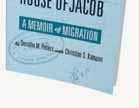


VBS on steroids
SD church reaches community kids with Super Summer Jam
Like many USMB congregations, Bethesda Church, a congregation of about 280 in Huron, SD, is a mission-minded church with a desire to reach their community for Christ. And like many USMB congregations, one way they hope to reach the kids of their community is through vacation Bible school.
Not surprisingly, Bethesda VBS organizers found that mostly church kids—not community children—came through the doors for VBS. Adding to the challenge, the makeup of Huron has changed in recent years, with an influx of immigrants and refugees who are unlikely to come to a church that doesn’t even share their language. So Bethesda reshaped their summer children’s ministry to take the gospel into their community with Super Summer Jam. They call it “VBS on steroids.”
Huron is a city of about 13,000 based on a farming and industrial economy. A large turkey processing plant and a Jack Links beef jerky plant draw immigrants, primarily Hispanic, in search of jobs.
In addition, Lutheran Social Services of South Dakota resettles political refugees in Huron each year—some 122 in their 2015 fiscal year. Many of those are Karen, a people group from Southeast Asia forced to flee their homes in places like Burma due to internal conflict and ethnic cleansing. While the adults often don’t speak English, the children usually do.
Given these changing community dynamics, Bethesda’s approach to outreach needed to change, too. The answer came from inner-city Chicago.
Chicago inspiration
Five summers ago, associate youth pastor Anthony Lind took a team of about 25 to work alongside New
Hope Church, the urban Chicago congregation he and his family had been part of before coming to Bethesda. The team participated in New Hope’s “Hope for the Hood,” an annual outreach with a 20-plus-year history in which the congregation takes children’s ministry into the inner city for a week.
For four women on the team, the experience was an epiphany. Cherrlyn Fast, Angie Fast, Laura Reinders and Lorena Blom are like-minded, high-energy schoolteachers. When these friends start talking about kids and ministry, conversation overlaps as they finish sentences and add to what another has said. So it’s not difficult to imagine how passion began to build as the four sat in that Chicago church and visited about their experience.
“Ideas started to flow and pretty soon the conversation turned to: We can do this in Huron,” says Angie Fast. “This little spark turned into a flame.” The four women brought the vision back to Bethesda, and Super Summer Jam was born.
“Our church wants to come to you”
The key to the Super Summer Jam vision is taking a VBS-like format to public parks to make it more accessible. Rather than expecting community families and children to come into the church, SSJ takes the gospel to them.
“We’re saying, ‘Our church wants to come to you,’” Reinders says. “‘We want to meet you where you are and get to know you. We care about you.’”
Initially, the church chose four sites in four quadrants of the city. Because the immigrant and refugee kids organizers wanted to reach don’t necessarily have someone to drive them around town, sites were selected for their ac-
Bethesda Church views Super Summer Jam as a mission opportunity in their community. “It has unified us in something much bigger than the four walls of our church,” says volunteer Laura Reinders. It will take 125-130 volunteers to make SSJ happen this year
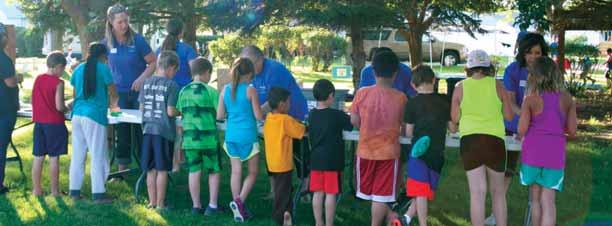
cessibility by foot. Over time, the team has learned certain locations are more effective. So this year, they expect to reach the same number of kids—about 300—in just two locations.
SSJ is always held the last week in July, a strategic window that hits between the end of summer sports leagues and the start of school activities. This year, the fourth for SSJ, it will be held July 26-30.
SSJ runs Tuesday through Friday evenings, then ends with a carnival on Saturday. Each of the four evenings looks similar, with a VBSlike format that begins and ends with large-group music and activities. Children are assigned to teams that rotate through four stations: lesson, craft, games and a different “special” each night. This year, the specials will include art, face painting, Bible trivia and a petting zoo. While a Bethesda volunteer has created curriculum in past years, this year’s SSJ will use “Shine” curriculum from Go Fish.
On Saturday, colorful inflatables and carnival games sprout on the green of a centrally-located park. Hundreds of children laugh as they run from one game to another. The smell of hot dogs or walking tacos fills the air, and upbeat Christian music sets a festive tone.
Parents and kids alike take refuge from the July heat under the shade of trees and in the misting tent. Bethesda volunteers, who are easily spotted because of their brightly-colored, matching T-shirts, mingle with the crowd and use small games to start spiritual conversations. Some volunteers hand out copies of the Jesus Film in Spanish and Karen. In the middle of the day, carnival games pause. Hundreds of children rush to a flatbed trailer to proudly present the songs they’ve learned for their parents. Roy Burket, pastor of Bethesda, gives a brief gospel presentation and opportunity to respond.
Angie Fast says, “We often look around and our eyes meet
and we have tears; it’s just one of those moments.”
Even though a team of volunteers quickly packs up and cleans up at the end of the day, leaving no physical trace of SSJ, the impact continues throughout the year. Bethesda’s midweek AWANA program reaches somewhere between 175 and 200 kids, and well over half are from Karen or community families. Likewise, about half of the junior high youth are Karen. And several women who attend a Bible study first heard about Bethesda through SSJ.
“The good news is being spread in our community,” Cherrlyn Fast says.
Rethinking VBS
The SSJ team encourages other USMB congregations to consider rethinking summer kids ministry to better reach out to their communities. “I’d encourage them to go for it,” Blom says. The Bethesda team offers three suggestions.
Begin with prayer. “We know that doing this without prayer is absolutely futile,” says Angie Fast.
Enlist a team, rather than going it alone. Reinders says, “It was absolutely no accident that the four of us and our husbands were part of that team to Chicago, because God definitely had a plan.”
Allow the ministry to evolve.
While SSJ initially imitated Hope for the Hood, it has morphed over the years as leaders incorporate what works best for their community. They’ve dropped a basketball tournament and a free meal and combined sites to make the most efficient use of their efforts. And they’ve added translation of printed materials into both Spanish and Karen in order to better serve those families.
For more specific ideas, contact the SSJ team through Bethesda; they’d be happy to share their vision. Even better, they say: Come to Huron and experience SSJ firsthand.
Myra Holmes







Convention launches new national ministry strategy
Future Story details to be revealed during National Convention
Don Morris, USMB interim executive director, describes the 2016 National Convention as an historic event. Why? Because this occasion will initiate a fresh season of ministry—a new future—for U.S. Mennonite Brethren congregations and the national conference.
“The 2016 National Convention will mark the starting point of this new Future Story,” says Morris. “I believe we can be completely confident that God has placed his blessing on this new vision. This new vision is designed to give us a new focus for the next 10 years or so. There are significant changes involved in this compared to how we have been doing things. I think it reflects what our churches are wanting and needing.”
The details of this new national ministry strategy have not been made public—that will happen July 29-30 during the National Convention held in Denver, Colo. But each local USMB church will have received a onepage summary of the national ministry strategy by July 1.
New strategy empowers churches
The summary emphasizes that the purpose of all national ministry strategies is to empower each local congregation to reach their full ministry potential. The document highlights three core commitments: local, national and global church multiplication/church planting/evangelism, intentional disciple-making and developing leaders.
The Future Story also envisions a shift to a networking structure in which churches will engage in “collaborative efforts” around one or more of the core commitments. This

will involve aligning national resources and structures to “serve, equip and network local churches for ministry.”
The expression of these core commitments will be guided by “our evangelical and Anabaptist distinctives,” according to the summary.
When asked why he is excited about the Future Story, Leadership Board vice chair Marv Schellenberg says it’s the togetherness that will come with this strategy.
“Everyone will be working together,” says Schellenberg. “The local churches and our agencies will be working with our three core commitments. We’ll be more focused, and when you are focused there is synergy and synergy brings collaboration. That’s what working together is all about.”
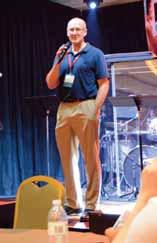
Steve Schroeder, Leadership Board chair, agrees and adds that the Leadership Board will have better clarity as to their role.
“We won’t be providing services to churches but rather brokering resources,” says Schroeder. “That will help the Leadership Board streamline the decisions we make and focuses our vision.”
Schroeder goes on to say he is excited that the new strategy will encourage and enable pastors to network with USMB pastors across the country. “Pastors will collaborate beyond their districts,” he says. “The current structure isn’t designed for this.”
Schroeder adds, “The theory is—and I think that it will work— that when we eliminate layers of organizational bureaucracy, people will be free to dream and implement things we aren’t currently seeing in our districts. It will free up grassroot movements around shared ministries.”

Steve Schroeder, USMB Leadership Board chair, moderates one of the business sessions during the 2014 National Convention. In response to feedback from 2012 and 2014 convention goers, business sessions this year have been streamlined.

2016 NATIONAL CONVENTION
Convention format changes
The Future Story will be introduced during the first of two business sessions Saturday, and time will be given during both of the workshop sessions that afternoon for delegates to discuss the new vision for ministry with Leadership Board executive members.
The full eight-page Future Story will be available at the convention. Morris emphasizes that this document represents a “fluid” picture that will involve transitional steps.
The abbreviated 2016 business sessions—two 90minute sessions in 2016 compared to three in 2014— and expanded workshop times are two changes made to the 2016 convention format based on feedback from delegates.
“After each convention we ask participants to provides us with feedback about the content and atmosphere of the convention,” says Morris. “The past two times (2012 and 2014) we had a lot of somewhat negative feedback about all the stage reports.”
Morris says, “Many people didn’t think spending all the time on oral reports was valuable. They said they would prefer to read written reports from agencies and to give more stage time to hearing good stories about what is happening with other churches.
“It’s clear that people realize we need to do business, but sometimes it just seems to draw out too long,” Morris continues. “So we’ll see if we can shorten the time and still get done what we need to get done without compromising adequate processing.”
Although delegates won’t be hearing from representatives of various U.S. and binational MB ministries and inter-Mennonite agencies, they will receive printed reports in the delegate booklet. Convention planners are also offering ministry partners other options for sharing.
Morris says the convention format will include short informative videos provided by partner ministries. Most ministry partners will provide display tables in the foyer and their representatives will be available to answer questions and provide information.
In addition to introducing the Future Story, the business sessions will include an announcement regarding the USMB National Director. The Board of Faith and Life will report on the status of U.S. and binational resolutions made from 1957 to the present. Delegates will
review the USMB budget and elect new members of the USMB Leadership Board, Board of Faith and Life and various partner ministry boards.
Other convention highlights
The new convention format also allows for slightly longer workshop sessions.
“People have indicated that good workshops help make a convention worth their time,” says Morris. “We spent considerable time choosing meaningful and relevant workshops for this convention. We have several workshops that will delve into some of today’s hot topics.”
One such topic is the current global refugee crisis, a subject that speakers from Mennonite Central Committee and MB Mission will be addressing in workshops. “The refugee situation is something we will encounter more and more, and it has a lot of political implications right now,” says Morris. “How do we as Mennonite Brethren respond to refugees?”
While the 2014 convention format included one keynote address, this year speaker Matt Heard will address the delegates twice.
“As we spoke with representatives of Outreach magazine’s speaker bureau, Matt Heard’s name kept coming up,” says Morris. “The content we were seeking—upbeat, meaningful and useful—was something they felt Matt would provide. He is fast becoming one of their top speakers, and they have many to choose from.”
Morris says Heard will be speaking from his book, Life with a Capital L, in which Heard explores 10 ways to transform everyday life into the extraordinary life God intended. “Matt wants to help us rediscover joy and connection with Jesus.”
The first events on the agenda for the 2016 National Convention are informal receptions Friday afternoon. Convention planners looked for ways to enhance opportunities for delegates to connect with one another, and the opening reception for all delegates was added for that purpose. An early afternoon reception is also planned for anyone working with children’s ministries.
To register or learn more, visit www.usmb.org. Registration remains open but the cutoff date for hotel registration is July 11. —Connie Faber










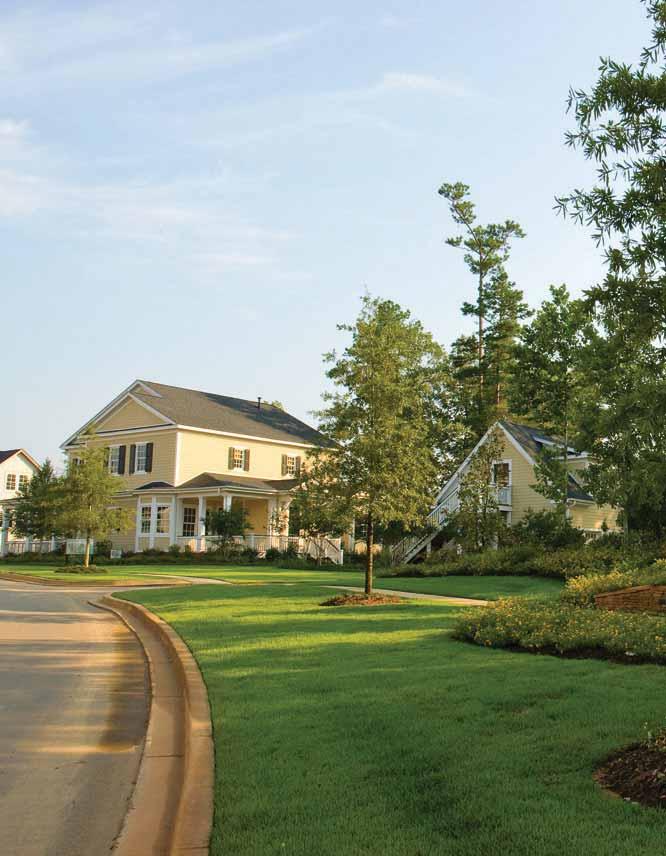
Don Morris Mission USA director
Proclaim Jesus
Responding to the culture wars with love
I’ve thought a lot over the past few weeks about all the changes happening in our culture. Many of these changes seem to be directed against our long-held values and conservative way of living here in America. I talk with many people who are amazed at how quickly some things have changed. It’s almost as if there’s a hope and plan by some that, if they can help it, no part of our society will be left untouched by dramatic change.
Many of us have read online articles about some of these changes and have even dared to then read the comment sections following the articles. In many cases, comment threads take a rather negative response toward those who desire to cling to more conservative viewpoints. If the Bible or Christianity is inserted into the discussion, that is often met with vitriol and condescension. Espousing a biblical or Christian-based worldview is not widely tolerated in mainstream blogs, publications or online comment sections. Long ago I determined to stay out of these online discussions because I would sometimes get angry and write things I shouldn’t.
I’m not suggesting that comment sections that follow controversy-laden articles are the means by which we completely form our opinions of the state of America. However, perhaps they do give us a glimpse into the mindset of loads of people in our culture who simply do not have any use for the Bible or for Christian thinking and wish we would merely go away.
Now, more often than not, I come away from observing our culture wars with ever-increasing sad-

ness. I’m sad that so many people have such a negative view of evangelical Christianity. I’m sad that our culture seems to want to be more and more “liberal” in how we look at life, often counter to God’s way as expressed in his Word. I’m sad that it appears more intense conflict rather than less is ahead of us. I’m sad that we as Christians haven’t been better advocates for our Lord and thus are seen instead as hating and condemning.
Yet, I don’t think God wants us to remain sad and melancholy about the state of our world. When I am able to look at it all through his lens, I realize this is an era of tremendous opportunity. People are still coming to know Jesus. In fact, in many regions of the world the response to Jesus is awe-inspiring. The King of Kings is still transforming people. And proclaiming Jesus is what we must be about—as long as we have breath.
I’m coming more and more to the conclusion that even if there is bitter persecution coming, we must truly love people, even our greatest adversaries, better than we ever have before. If we’re labeled as intolerant and narrow-minded, we’ll strive to be peaceful and forgiving. If we’re told we can no longer preach God’s Word, we’ll still pursue righteousness. When we’re faced with blatant attacks against Christianity, we’ll respond with grace. Even if we are met with flagrant confrontation, we’ll never, ever stop benevolently proclaiming the gospel—not ever. It’s the most important message this ever-changing world needs above all else. THAT I can choose to make a comment about!
About 20 million people worldwide—including 4 million from Syria alone—are refugees, according to World Relief. According to a Lifeway Research study, 86% of Christians agree that Christ followers should “care sacrificially for refugees and foreigners.”
Convention to feature church plant stories
Local
churches
the focus of new USMB Future Story
In just a few weeks—July 29-30, 2016—we will gather in Denver, Colo., for the biennial U.S. Mennonite
Brethren National Convention. The convention schedule will be a little bit different this year as there will be less reporting from the stage and more time for workshops, visiting with one another and hearing from a great guest speaker, Matt Heard. Details can be found at www.usmb.org, including a biography of Heard and the full schedule of events.
Throughout the convention, Mission USA-supported church planters will share stories about the exciting things God is doing in their locations. A good part of the Saturday evening session will be spent listening to more church plant stories and then praying for these leaders. We do church planting together, and we should also celebrate God’s good work together.
Likely the most important aspect of this convention will be the full reveal of the new vision for USMB as expressed in what will be known as our Future Story. This
new path forward comes as the result of two years of praying, planning, evaluating, processing, editing, rewriting and discussing. Many people from the USMB family have had a part in listening to God and in the development of what we believe is his message and vision for us.
“Although most of the details will be revealed in Denver, you should know that the Future Story strategically focuses on helping and empowering each local MB church to reach its full, God-given ministry potential,” says Don Morris, USMB interim executive director.
Morris says that after this process, those involved believe God has directed USMB efforts into three core commitments: local, national, and global church multiplication/church planting/evangelism, intentional disciple-making and developing leaders
“I hope you’ll be in attendance as we join together for what may be one of the most memorable conventions in our USMB history!” says Morris.
SMCC Lehi celebrates baptism
Publicly declaring one’s faith a huge step
Twelve people have been baptized in the first six months since South Mountain Community Church (SMCC) planted its newest campus in Lehi, Utah. Lehi is located in Utah County, the least “churched” county in the United States where fewer than 1 percent of the county’s 560,974 people are affiliated with an evangelical church.
Eric Nelson, pastor at SMCC Lehi, says baptism is a significant step for someone who was once a Mormon. “We have to realize that for many people coming out of Mormonism, the profession of their new faith in Jesus through baptism is a huge, huge step,” says Nelson. “Not only is it a public declaration of their faith, but often it is not well received by their family. There are several instances where this means a break from their family or a rejection by their family. To make the choice to follow Jesus is not a gray area; it’s black and white. You’re in or out, status quo or rejected.”
In his video testimony, Rhett, one of the dozen people baptized, talks about being scared the first time he at-
tended SMCC Lehi. He also recalls the impact of hearing the Bible being preached in a way he had never experienced before. “It was so helpful,” says Rhett. “It got into my heart…. I’m being baptized today because I believe in Jesus. I believe he’s my Savior.”
SMCC, planted in 1996, was the first U.S. Mennonite Brethren congregation planted in Utah. SMCC has four campuses, of which Lehi is the newest. SMCC Lehi is a church planting partnership involving SMCC, the Pacific District Conference and Mission USA, the USMB church planting ministry.—Mission USA

Pastor Eric Nelson, left, says, “It’s been a surprise, but we actually have a lot of older people in our church. There is a wide range of ages and life experience.”
Caitlyn Baird

Connecting children with God’s creation
Five ways to help kids interact with nature
In churches across North America, we are witnessing what journalist and author Richard Louv has famously diagnosed as “nature deficit disorder”: a generation lacking personal relationship with God’s natural creation. More and more, kids are taught to find physical, mental and spiritual refreshment indoors and are fearful or disinterested in spending time outside. As one of the pastors working with children at North Fresno Church (NFC), I know this is an unfortunate reality for our youngest generation.
NFC is located in the center of a sprawling urban layout, within a block from traffic-congested Highway 41 and around the corner from multiple liquor stores. The few patches of grass on our campus cannot make up for the miles of concrete and asphalt that surround us. So it is no wonder the students I interact with on a weekly basis assume ministry happens in air-conditioned classrooms under florescent lighting.
What are ways we as a community and I as a pastor can create (literal) space for our children to interact with nature? Here are five suggestions from a woman living in the city:
1. Go outside. It may seem the simplest solution, but it also has some of the longest-lasting effects. A few minutes in the sunshine can help alleviate behavioral problems for some students and gives everyone the chance to breathe fresh air. Encourage Sunday school teachers to instruct in the shade of a tree. Allow Wednesday evening programs to hold recreation time on the lawn. Host church activities in your own green space or at a local park.
2. Play with natural elements. Nature does not always have to be experienced outside! Use a ‘Leave No Trace’ mentality and appropriately collect different things to bring indoors. Incorporate leaves, feathers
and rocks in craft time. Use real examples when referring to natural aspects of the Bible lesson. Our preschool class remembers Jesus’ parable of the sower when they were each given a bag of dirt to squish while the teacher explained the concept of seed falling on good soil.
3. Encourage families to explore. Connect with and promote community organizations that engage individuals of all ages in a natural setting. Many local parks, schools and community centers provide opportunities to hike, bike and create in the great outdoors. Pray about ways your church can get the neighbors outside—a BBQ, a day-hike in a nearby wilderness area or playing a round of Pickleball.
4. Ask questions. Statistically, North American children spend a majority of their time under a roof, so when they go outside they may be curious about what they are sensing or experiencing. Listen to the questions they are asking and share your own thoughts about your surroundings. Nature brings with it a sense of wonder, which is not always meant to have answers.
5. Acknowledge nature is part of God’s plan. We have the awesome opportunity and privilege to connect the beauty of the outdoors with a loving Creator. From the majestic peaks of the Sierra Nevada Mountains to the tiny details on a Monarch butterfly’s wings, all of nature points to God. We need to teach our children—and remind ourselves of—the ballads of King David: “The heavens declare the glory of God; the skies proclaim the work of his hands” (Ps. 19:1).
Open up the classroom door, pick up a shiny pebble and allow your students to discover God in nature.
Caitlyn Baird is the associate pastor for children and family ministries at North Fresno Church, a USMB congregation in Fresno, Calif.




Christa Wiens
Today’s abolitionists fight for enslaved
Documentary offers real-time look at sex trafficking
After spending more than a decade working with Homeland Security to rescue children from sex trafficking both overseas and domestically, Tim Ballard turned in his badge. But he did not step away from this work. Instead he took another step into this world by starting his own nonprofit organization with the goal of freeing even more children than was possible as part of a government organization. The Abolitionists is a documentary that tells the story of a handful of these missions.
Unlike many other anti-trafficking movies, this film does not attempt to reenact scenes, dramatizing past events. Instead, the members of Ballard’s team were recorded in action and on the scene. This means the viewer sees just what these missions were like, not secondhand but as it happened. We see the excitement, the frustration and the fear. We hear the traffickers in their own words. And we see the children, dressed to look much older than they are, entering rooms where they expect to experience the same abuse they have suffered many times before.
This movie was shown nationwide one day only, May 16, in a select group of theaters, and a small group of us from Fresno, Calif., attended together. Our experience in the fight against human trafficking varied from those who have been part of the fight for years to those just beginning to explore the issue.
As we discussed our experience over tea later that evening, we talked about the power of seeing these traffickers in action. Throughout the documentary, Ballard refers to traffickers as “the bad guys.” But these women and daughters, young boys and middleaged, unassuming American men “never look like the bad guys,” notes Ballard, and indeed a powerful mes-
sage in this movie is that traffickers do not fit one demographic, one age group, one gender.
One member of Ballard’s team of abolitionists is a man referred to as Batman. Before turning his life over to Christ, Batman laundered drug money, abused drugs and alcohol and spent weeks in brothels. So often we vilify the traffickers and those who drive demand. This movie reminded us that Batman and people like him need Christ, just like all of us. Batman is a modern-day Apostle Paul. How many others are there, we wondered.
The Abolitionists also highlighted the power that we have as Americans. So often we think that this problem is too big, and we can’t possibly make a difference. Or we assume that human trafficking is happening “over there” somewhere, too far away for our influence to reach. But in fact, it is easy to see in this film that the American title carries great weight.
Governments were willing to receive help and advice from Americans and to protect them as well. The American dollar carried weight. Traffickers were eager to please Americans with money. This was such a powerful reminder that we in the West are often the ones who drive the demand. We produce the pornography. We fuel the sex tourism industry.
We Americans who stand opposed to these things must use our American name, our money, our power and our influence to speak for those who cannot speak for themselves. It is our responsibility to respond.
Christa Wiens is a trained educator and mother of four young children who lives in Fresno, Calif. She has been partnering with Central Valley Justice Coalition in the fight against human trafficking for the past year.

For years, Randy Friesen, MB Mission general director, has been meditating daily on Scripture and reflecting on its missional themes. Friesen has written hundreds of short devotionals in his own journals and now they are made available online. Following the Bible reading plan of the Life Journal, each entry includes three parts: a highlighted passage from the reading, a brief reflection, and a prayer. Sign up for Friesen’s “Listening to the Word” at www.mbmission.org


milestones
BAPTISM/MEMBERSHIP
Marvin and Connie Angleton, Clay Delmez, Rebekah Voran and Julie White were welcomed May 22 as members of First MB Church, Wichita, Kan
Eric Rodriguez and Netta Harms were baptized May 15 and received as members of Garden Valley Church, Garden City, Kan.
Woody Turner and Julian Delay were received May 1 as members of Pine Acres Church, Weatherford, Okla.
Leah Mathes and Emily Jones were baptized May 1 at New Life Church, Ulysses, Kan. Robert Mathes and Brittany Norris were baptized May 22.
Walt and Mary Ann Heinrichs, Laura Kliewer, Linda Radford and Micah Thiesen were received April 3 as members of Reedley (Calif.) MB Church.
Sean Wilson was baptized April 3 at Zoar MB Church, Inman, Kan.
Marissa Burkhard, Elizabeth Heinrichs, Emma Kubar and Manuel Mejorado, Jr., were baptized and received as members of Dinuba (Calif.) MB Church March 27. Taylor Smith was also received as a member.
South Mountain Community Church, Draper, Utah, baptized 22 people March 20.
April Holmes was baptized March 2 and received as a member of Bible MB Church, Cordell, Okla.
Barry and Joni Smith and Steven and Jennifer Redekop were received as members of Bethany Church, Fresno, Calif., Jan. 12.
CELEBRATIONS
Birch Bay Bible Community Church, Blaine, Wash., recently recognized three women for teaching Sunday school for more than 45 years.
Bev Ross and Carol Sallenback taught two through five year-olds, and Mary Eytzen played piano for an opening music time in the class. The congregation hosted a cake reception and time of sharing June 12 in their honor.
Ebenfeld MB Church, Hillsboro, Kan., celebrated the completion of a sanctuary remodel June 12. A catered meal followed the dedication service.
Faith Bible Church, Omaha, Neb., surprised pastoral couple Stephen and Jane Stout with an official welcome and licensing ceremony June 5 that included Central District Conference minister Rick Eshbaugh. The congregation hosted a meal with a special cake, cards, gifts, decorations and words of encouragement.
Vinewood Community Church, Lodi, Calif., celebrated the retiring of debt for their building ex-
pansion, originated in 2002, with a mortgage burning May 1. They also melted an “iceberg,” a block of ice that symbolized their debt encumbrance. District minister and former pastor Gary Wall preached, and the congregation enjoyed a meal together.
WORKERS
Isabella Fenton is serving as a children’s ministry intern this summer at First MB Church, Wichita, Kan.
Jay Risner has resigned as lead pastor at Enid (Okla.) MB Church. The congregation held a farewell for the family May 22.
Pat Coyle, pastor of Shafter (Calif.) MB Church, was on sabbatical April through June.
Jason Kinzel is serving as the interim youth pastor at North Fresno (Calif.) Church
Dave Buller is the new associate pastor at North Oak Community Church, Hays, Kan
Dennis Fast began serving June 1 as the associate pastor of care and discipleship at Kingsburg (Calif.) MB Church. He was installed June 5.
Daniel Fiester was installed Feb. 14 as pastor of Bible Fellowship Church, Rapid City, SD. Daniel moved from Colorado and joins his brother, Jon, who is on staff as the youth pastor.
DEATHS
Bayless, Ruby Joyce, Reedley, Calif., member of Dinuba (Calif.) MB Church, Nov. 12, 1913—Jan. 2, 2016. Parents: Jacob P. and Mary (Zielke) Kroeker. Spouse: Charles Wendell Bayless, deceased. Children: Rendy, Bernie; two grandchildren.
Friesen, Melba, Corn, Okla., member of Corn MB Church, June 12, 1927—May 26, 2016. Parents: David D. “D.D.” and Martha (Friesen) Reimer. Spouse: Paul Friesen, deceased. Children: Gloria Block, Larry, Greg; five grandchildren; eight great-grandchildren.
Friesen, Paul, Corn, Okla., member of Corn MB Church, Oct. 8, 1927—May 4, 2016. Parents: Peter E. and Katie (Hiebert) Friesen. Spouse: Melba Reimer. Children: Gloria Block, Larry, Greg; five grandchildren; eight great-grandchildren.
Hein, Lydia “Grannie,” Hillsboro, Kan., of Hillsboro MB Church, Aug. 31, 1928—April 13, 2016. Parents: Henry P. and Helena (Goertz) Adrian. Spouse: Emice Hein, deceased. Children: Kenneth, Eugene, Barry Harms; seven grandchildren; 12 great-grandchildren; one greatgreat-grandchild.
Hiebert, Ferne, Hillsboro, Kan., of Hillsboro MB Church, Sept. 8, 1928—April 19, 2016. Parents: G.G. and Sara (Goertzen) Kornelsen. Spouse,

Oregon church celebrates 50 years
North Park Community Church (NPCC), Eugene, Ore., celebrated 50 years May 21-22. May 22 marks 50 years to the day since the groundbreaking for the building they still call home, but the church actually began meeting two years earlier on the campus of what is now Northwest Christian University. The church’s first pastor, Harold Schroeder, began serving Sept. 9, 1964, and charter membership enrollment began that day. Some 160 people attended the late May celebration, which included a service project Saturday, worship service and anniversary presentation on Sunday and several opportunities to reconnect over a meal, dessert or coffee. The church’s history was honored with special recognition of all former pastors and a review of God’s faithfulness. The Saturday afternoon service project at Bertha Holt Elementary School, across the street from the church, honored NPCC’s current partnership with their community. In 2011, NPCC initiated Harlow Serves, a partnership between area churches, the neighborhood association, local business leaders and individuals. This initiative has fostered cooperation in the community, enabled the church to serve the elementary school more effectively and won a national award from Neighborhoods USA.

Hesston MB offers mental health services
Hesston (Kan.) MB Church has received a $1,800 grant from the Hesston Community Foundation to provide mental health services for those affected by the Feb. 25 shooting at Excel Industries. While Excel is providing help for its employees, the church recognizes that many who were impacted are not employees. “We want all affected to get any help from the trauma they have experienced,” says J.L. Martin, pastor of children and families. The funds will help pay for counseling for those who could not otherwise afford it. Services will be provided by counselor and Hesston MB member Carlin Buhrman, who operates Central Kansas Counseling out of the church.
Albright honored
Larry Albright, associate pastor and worship pastor at Lincoln Glen Church, San Jose, Calif., was honored for 38 years of ministry June 5. His tenure at Lincoln Glen is the longest service for a pastor in a single USMB congregation. The church invited former members to the celebration, which featured a mass choir of current and former choir members. Albright and his wife, Debbie, were given a collection of stories and photos and a monetary gift. He plans to continue serving in a limited capacity as part-time minister of care.
Clarence Hiebert, deceased. Children: Tim, Bob, Beth Klassen, Sue Scheer; 13 grandchildren; 14 great-grandchildren.
Kliewer, Alden Ray, Buhler, Kan., of Buhler MB Church. March 18, 1922—May 17, 2016. Parents: George and Martha (Penner) Kliewer. Spouse: Adina Schroeder. Children: Aldena Hershberger, Wayne; four grandchildren; three great-grandchildren.
Pauls, Lonnie R., Buhler, Kan., member of Buhler MB Church, July 19, 1950—April 26, 2016. Parents: Ike and Linda (Regier) Pauls. Stepchildren: Amelia McMillen, Emily Pyle; five stepgrandchildren.
Penner, Norma Elaine, San Jose, Calif., of Lincoln Glen Church, San Jose, May 11, 1928—April 25, 2016. Parents: Ben and Esther Funk. Spouse: Louis J. Penner, deceased. Children: Dennis, Daryl; three grandchildren; five great-grandchildren.
Quiring, Henry H., Henderson, Neb., member of Henderson MB Church, Oct. 2, 1923—April 8, 2016. Parents: John P. and Katherine (Toews) Quiring. Spouse: Miriam Regier. Children: Connie Travis, Joyce Nielsen, Gaylene Grosshans; four grandchildren; six great-grandchildren.
Toews, Edwin, Enid, Okla., member of Enid MB Church, June 23, 1924—Jan. 16, 2016. Parents: Daniel and Emma (Harms) Toews. Spouse: Virginia Wiebe. Children: Myra Torabi, Lois Tweeten; two grandchildren.
Toews, Sarah Alice, Enid, Okla., a member of Enid MB Church, Feb. 12, 1918—March 5, 2016. Parents: Isaac and Nettie (Cornelson) Wiebe. Spouse: Johnny Toews, deceased. Children: Diana Wiens, JoAnn Rice; two grandchildren; two great-grandchildren.
Wall, Joyce, Fresno, Calif., member of Bethany Church, Fresno, March 25, 1929—April 4, 2016. Parents: Ben and Frieda Rempel. Spouse: John M. Wall, deceased. Children: Diane Suderman, Kenneth, Gary; seven grandchildren; eight greatgrandchildren.
Wiebe, Lorma Lee Kroeker, Kearney, Neb., June 9, 1937—May 16, 2016. Parents: Henry and Lena Kroeker. Spouse: David Wiebe. Children: David, Eric, Kristin Lacey; five grandchildren.
reaching in
DISCIPLESHIP
Grace Community Church, Sanger, Calif., recently hosted a 13-week workshop, “Children’s Champions,” for anyone in Fresno County who was interested in learning about how to work with children.
Christ Community Church, Sioux Falls, SD, offered a workshop on “Sharing Jesus with our Muslim neighbors” May 25.
Hillsboro (Kan.) MB Church offered a churchwide spiritual retreat May 7 as part of a series called “Refuel.” The event was held at a local lake and included breakfast and lunch.
Jon Wiebe, president and CEO of MB Foundation, was the guest speaker for a “Faith and Finances” seminar April 23 at Shafter (Calif.) MB Church.
Volunteer training at Enid (Okla.) MB Church in April focused on practical safety procedures for the facility in the event of a fire, tornado or active shooter. Local experts were brought in as resources.
Ebenfeld MB Church, Hillsboro, Kan., is using a video series and book by Matt Heard called Life with a Capital L for summer Sunday school. Heard will be the speaker at the USMB National Convention this summer.
Lincoln Hills Bible Church, Sioux Falls, SD, offered a workshop on cyber security April 18.
FELLOWSHIP
During the summer months, Henderson (Neb.) MB Church is offering a family fellowship time, with food, a coffee bar and questions or activities to facilitate conversation, in lieu of Sunday school.
Men from Kingsburg (Calif.) MB Church were invited to an “eat meat” night with a pork theme May 22.
Grace Community Church, Sanger, Calif., recognized graduates May 15 with a BBQ lunch.
Birch Bay Bible Community Church, Blaine, Wash., honored mothers with a brunch May 8.
Fourth through sixth grade boys and their fathers from Laurelglen Bible Church, Bakersfield, Calif., played laser tag May 13.
Men from Rosedale Bible Church, Bakersfield, Calif., went to a Dodgers baseball game May 13.
The theme of the April 10 women’s spring tea at Dinuba (Calif.) MB Church was “Standing on the promises of God.”
Women from Shafter (Calif.) MB Church were encouraged to wear aprons to an April 30 brunch. The speaker shared a life lesson illustrated by old aprons, and prizes were awarded for the most unique, most worn, oldest and cleverest aprons.
Men from Enid (Okla.) MB Church held a wild game supper April 2, with a wild game potluck, a guest speaker, door prizes and a display of hunting trophies.
North Oak Community Church, Hays, Kan., honored graduating high school seniors with a BBQ dinner May 4.
Koerner Heights Church, Newton, Kan., concluded another year of midweek programs with their annual family night, held at a local park April 20. Families enjoyed a meal of hot dogs and chips, followed by an “Amazing Race” game through the park.
churchNotes
reaching out
LOCALLY
Junior high youth from Koerner Heights Church, Newton, Kan., helped with landscaping at the church this spring as an ongoing service to the church.
Youth from Bethany Church, Fresno, Calif., provided care for children with special needs May 21 so that parents could have a day of respite. This outreach required training, provided by the nonprofit group Joni and Friends.
The Bridge Bible Church, Bakersfield, Calif., collected donations of Pack-n-Plays, onesies and swaddling blankets May 22. The items were distributed through the local medical center to families who
Local Church Job Openings
couldn’t afford a crib for their baby as part of a “safe sleeping” campaign.
Pine Acres Church, Weatherford, Okla., hosted an area-wide pitch, hit and run contest and home run derby May 11 for kids age seven to 14. Winners went on to state competition.
Members of the Shafter, Calif., City Council received a copy of the Christian Leader article “Little free libraries open doors” (March/April 2016) before they heard a request for space in public areas parks for Little Free Libraries. The article highlights community outreach efforts of Shafter MB Church and Iglesia Companerismo Cristiano, both of Shafter. On May 4, Shafter City Council approved spending $400 for supplies for five Little Free Libraries to be built and placed at a local bus stop and four public parks.
CLEARINGHOUSE
Lead Pastor: Christ Community Church, Sioux Falls, SD, is seeking a full-time lead pastor. Responsibilities include helping to provide leadership for the congregation, preaching, teaching, discipling and mentoring. Please email resume and statement of faith to cccsfpastorsearch@gmail.com
Visitation Pastor: Parkview Church in Hillsboro, Kan., is seeking a visitation pastor. This is a quarter-time position. Email office@parkviewmb.com for a job description
Senior Pastor: Koerner Heights MB Church, Newton, Kan., is seeking a full-time lead pastor. Koerner Heights is located in a community of 30,000 in south central Kansas, 20 miles from Wichita. Primary responsibilities include preaching, interaction with all church ministries and pastoral care. The candidate needs to have a passion for Jesus, kingdom growth, community outreach and the ability to equip the congregation for discipleship. For more information and application, visit koernerheights.org. Direct any questions to Ron Braun, search committee chairperson, at rdbraun@cox.net
Student Ministries Pastor: Reedley (Calif.) MB Church is currently seeking a fulltime student ministries pastor. The successful applicant will oversee the ministry towards the high school students (grades 9-12) with a desire to: disciple students, develop spiritual maturity, provide quality Christian experiences, serve as a resource to parents/families and a resource to the RMBC community of faith. For more information please contact Jessica at jessica@reedleymbc.org, or visit www.reedleymbc.org/jobs
Lead Pastor: Good News Fellowship, Ferndale, Wash., is seeking a full-time lead pastor. The lead pastor is called to use his skills and gifting: to preach and teach the Word of God, to share the good news of Christ with lost people, to provide spiritual and administrative leadership, to equip the church family and to offer pas-
From COLLEGE, Page 5
significant. Mennonite Brethren cannot provide the faculty and professional staff needed. Even more critically, Mennonite Brethren cannot provide the needed board members. This pattern has occurred in most—but not all—denominations. But the small membership of U.S. Mennonite Brethren and the combined size and needs of our three schools is an extreme case.
We know why and how we got here, but now what? To serve each other well, what should the next steps be for USMB and our schools? What mutual covenant, if any, should bind and guide the various relationships? What does each need or want from the other? Is regionalization officially or de facto ended? What does being Anabaptist mean in practice to
GLOBALLY
First MB Church, Wichita, Kan., sent a team to France June 10-19 to work alongside missionaries there.
For the second year, Henderson (Neb.) MB Church sent a team to The Greenhouse, Saratoga Springs, Utah, to help with their summer Bible adventure June 13-18.
Youth from Discovery Bible Fellowship, Collinsville, Okla., served in Puerto Rico June 11-18 and will serve in Nashville July 17-23. Teams also served in Uganda and Nicaragua this summer.
toral care and counsel in the church and in the community. For more information on the position and where to send your cover letter & resume, please visit www.goodnewsfellowship.org
Youth Pastor: Kingsburg (Calif.) MB Church is an established and growing church. We are seeking God’s direction and guidance to fill the role of a youth pastor and worship leader. Please send inquiries to our email at kmbcsearch@gmail.com
Agency Job Openings
College Faculty: Fresno Pacific University is seeking qualified candidates for the following positions: School of Business dean; faculty in Business; faculty in Criminal Justice; Information Literacy instruction/Distance Learning librarian; and faculty, Personnel Services Division chair and director of the School Guidance and Counseling Program. Complete job descriptions and an application are available online at www.fresno.edu/careers
Planned Giving Advisor: MB Foundation is accepting applications for Planned Giving Advisor. This person will represent MB Foundation programs and services to individuals and ministries throughout the West Coast. The advisor will encourage charitable giving through current giving, estate planning and lifetime gift plans and provide customer service in all other areas of Foundation work. The individual will be based out of the Fresno, Calif., office but will relate to individuals and churches throughout the Pacific District. If interested, send a letter and resume to: Jon C. Wiebe, President & CEO, MB Foundation, PO Box 220, Hillsboro KS 67063 (jwiebe@mbfoundation.com)
Travel
Visit Europe the Mennonite Way! Multiple hotel tours focusing on Mennonite-Anabaptist history in Holland, Belgium, Germany, Switzerland, Poland and Ukraine. Organized by Mennonite Heritage Tours, www.mennoniteheritagetours.eu
USMB churches and their schools?
In an anti-Christian legal, moral and societal context of same-sex marriage, gender dysphoria, polygamy, individualism, greed and polarized politics, what roles do the denomination and its churches need each other to play? Would joining with other similar church bodies help or hinder our service for Christ and his kingdom? Does an independent and separate U.S. Mennonite Brethren denomination still matter in the work of God’s kingdom? And if so, does it still want to control and/or try to support any or all of its three schools? Here we are. We have lots of options. What now?
Richard Kriegbaum is president of Fresno Pacific University, the Mennonite Brethren university in Fresno, Calif.





